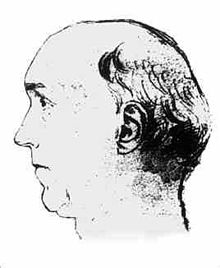Edward Troughton
Edward Troughton (born October 1753 in Corney, Cumberland , † June 12, 1835 in London ) was a British instrument maker who was known for his telescopes and other astronomical instruments.
His parents were the farmer Francis Troughton and Mary, b. Stable. His uncle John Troughton (* around 1716) was an instrument maker in London. Edward was the youngest of six children and initially worked with his father. His older brother John († 1788) and another did an apprenticeship with the uncle. After the death of his second brother, Edward began an apprenticeship as an instrument maker with his uncle in 1773. His method of dividing arcs, developed in 1778, was later identified as "the greatest improvement in the art of instrument making.
In 1779 he entered into a partnership with his brother John and soon established himself as the leading manufacturer of navigation, surveying and astronomical instruments in Great Britain. After the death of Jesse Ramsden in 1800, they became England's leading instrument maker. In 1782 they took over the established business of the instrument maker Benjamin Cole (1695–1766) at 136 Fleet Street under the name The Orrery . (Cole's father of the same name had taken over the business from Thomas Wright .) In 1805 he constructed the first modern transit circle. In 1806 he created the Groombridge Transit Circle , which Stephen Groombridge used for his star catalog. In 1809 he received the Copley Medal of the Royal Society. In 1812 he set up the mural circle (for measuring polar distances) at the Greenwich Observatory . He invented numerous geodetic instruments, and his sextants were used by almost all seafarers. In 1822 he was elected a member ( Fellow ) of the Royal Society of Edinburgh .
In 1826 he took William Simms (1793-1860) as a partner and the company became known as Troughton & Simms (from 1922 Cooke, Troughton & Simms ). With the astronomer James South (1785–1867), who was not satisfied with the quality of a telescope suspension, he led a long legal battle.
literature
- At the sign of the orrery ...: the origins of the firm of Cooke, Troughton & Simms, Ltd. (from material collected by E. Wilfred Taylor and J. Simms Wilson; and brought up to date by PD Scott Maxwell)
- The circular dividing engine of Edward Troughton, 1793 ; In: Transactions of the Optical Society ; Volume 25, Number 3, 1924
Individual evidence
- ^ The MacTutor History of Mathematics archive: Troughton biography , accessed January 13, 2014.
- ^ Fellows Directory. Biographical Index: Former RSE Fellows 1783–2002. (PDF file) Royal Society of Edinburgh, accessed April 17, 2020 .
| personal data | |
|---|---|
| SURNAME | Troughton, Edward |
| BRIEF DESCRIPTION | British instrument maker |
| DATE OF BIRTH | October 1753 |
| PLACE OF BIRTH | Corney, Cumberland |
| DATE OF DEATH | June 12, 1835 |
| Place of death | London |
